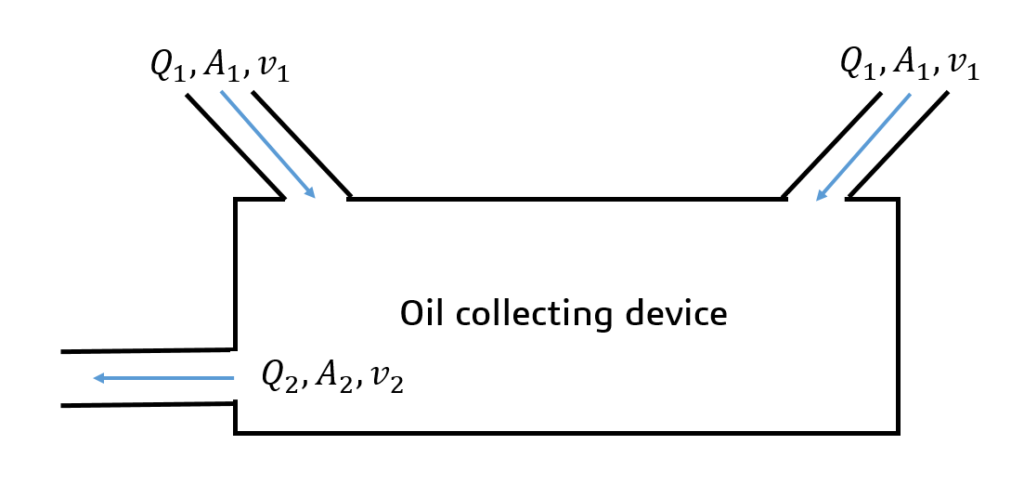Good afternoon. I’m thinking seriously about the fluid mechanics issue today. Recently, there is a problem I am trying to solve, and the situation is as follows. Let’s look at the picture.

The situation is that after a lubricant flows from a certain facility, it is gathered through two pipes to the collector. However, rather than acting as a tank, this collector can be thought of as a passage through the lubricant. So, before the lubricant accumulates in the oil collector, the lubricant must exit through the incoming foot outgoing piping.
If the inside of the oil collector is not filled with lubricant, and the structure is designed to drop out as soon as it comes in, isn’t the flow rate of incoming and outgoing lubricant the same?

Then, because v1 and v2 are the same, should the conclusion be that the two areas of the incoming pipe and the area of the outgoing pipe should be the same?

Let’s look at Bernoulli’s theorem.

The following assumptions must be satisfied to apply Bernoulli’s equation.
The fluid must be incompressible.
- Even if the pressure changes, the density should not change.
- The streamline must not pass through the boundary layer.
- There should be no viscous force.
- There should be no change in time (steady state).
- It applies only to one wire.
- The total energy on one streamline is constant.
- There is no energy exchange with the outside of the flow.
According to Bernoulli’s equation, the kinetic energy term disappears, and only the pressure term and the potential energy term remain because the flow rates on both sides are the same and the type of lubricant is the same.
If so, it can be said that there is a pressure difference due to the position, but it is difficult to see a height difference because the lubricant does not accumulate in the oil collector and immediately escapes. Even if the lubricating oil accumulates, the structure of the oil collector is long and horizontally short, so it can be regarded as insignificant even if there is a pressure difference depending on the height.

